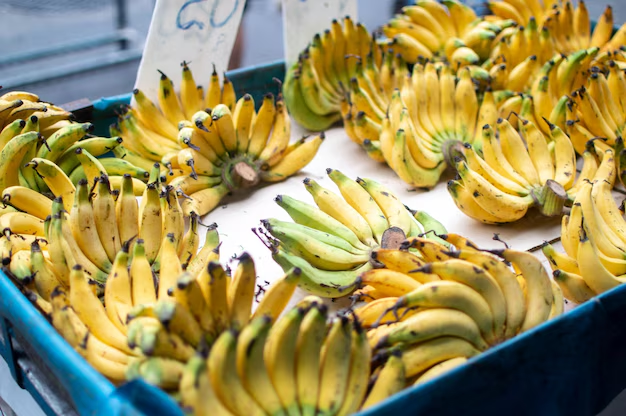Should You Refrigerate Your Bananas? Here's What You Need to Know
Bananas are a popular fruit, known for their sweet flavor, portability, and nutritional value. However, one common question often leaves fruit lovers scratching their heads: Is it safe to put bananas in the refrigerator? Whether you’re looking to extend their shelf life, maintain freshness, or simply trying to optimize your kitchen setup, understanding the ups and downs of banana storage can help you make informed choices and enjoy them longer. Let's peel back the layers of this topic and explore everything there is to know about refrigerating bananas.
Understanding Banana Storage
Bananas are a tropical fruit, which means they thrive in warm climates. This naturally leads us to question the impact of colder temperatures on their quality and taste.
How Bananas Ripen
Bananas are climacteric fruits, which means they continue to ripen after being picked. The ripening process involves the conversion of starches into sugars, making the fruit sweeter and softer as time goes on. This process is influenced by temperature, and understanding it is key to deciding the right storage method.
Why Refrigeration Might Alter the Process
Refrigeration can slow down the ripening process, preserving the ripeness but also potentially affecting the appearance. Once bananas are refrigerated, their skin can start to turn brown or black surprisingly quickly, which some may find unappealing despite the fruit inside being unaffected.
Advantages of Refrigerating Bananas
While bananas may not traditionally belong in the cold, there are certain benefits to refrigerating them, especially once they reach the desired ripeness.
Preserving Ripe Bananas
One of the main reasons to refrigerate bananas is to preserve their ripeness. If your bananas are just the right amount of sweetness, but you're not ready to eat them all, storing them in the fridge can halt further ripening and extend their edible state for several days.
Reducing Food Waste
By extending the edible life of bananas through refrigeration, you can reduce waste. This is particularly important in households where bananas are a staple, but consumption doesn’t always match the pace of ripening.
Disadvantages and Considerations
Despite the benefits, there are some downsides to consider that might make refrigeration less desirable for some.
Aesthetic Changes
The most obvious downside is the change in appearance. Rich yellow skins can take on an unappealing black coloration when exposed to prolonged cold. Although this doesn’t necessarily affect the taste or texture of the flesh inside, it can be off-putting.
Temperature Sensitivity
Bananas are sensitive to cold temperatures. Very cold storage can alter the texture of the fruit, making it more mushy or discolored, which might not be ideal for everyone.
Best Practices for Storing Bananas
For those who decide to refrigerate their bananas, there are best practices to follow to maintain the quality and freshness.
Timing is Key
The best time to move bananas to the refrigerator is once they are perfectly ripe. This typically means when the yellow peel is vibrant and free of green tinges.
Store Them Properly
To minimize cold damage, consider storing bananas in a plastic bag before refrigeration. This can protect them from moisture and minimize skin darkening.
Peeling and Freezing
For long-term storage, consider peeling bananas and then freezing them in chunks or halves. This way, you bypass the aesthetic degradation issue and offer yourself frozen fruit ready for smoothies or baking.
Exploring Alternatives: Other Ways to Store Bananas
If refrigerating isn’t appealing, there are alternatives for banana storage that can extend their freshness without affecting their appearance.
Hanging Your Bananas
Using a banana hanger can keep the fruit off surfaces, preventing bruising and allowing even ripening. This method can help extend the shelf life slightly by promoting airflow around the fruit.
Banana Bags
Specialty banana bags are available that claim to slow down the ripening process. These breathable bags, often made from cotton or a similar material, can be an alternative for those wanting room-temperature storage.
Other Refrigerator Tips and Tricks
Taking control of banana storage is just one aspect of optimizing your refrigerator use. Here are some additional tips for maximizing freshness across your produce:
🥒 Keep Ethylene Producers Away: Bananas produce ethylene gas, which can speed up the ripening of nearby fruits and vegetables. Store ethylene-sensitive produce separately to maximize their longevity.
🥕 Use Drawers Wisely: Utilize crisper drawers which are designed to regulate humidity and are perfect for maintaining vegetables’ freshness.
🍏 Group Similar Items: Keep like with like to avoid flavor transfer and maintain optimal freshness in each category.
Key Takeaways for Banana Storage 🍌
Here’s a concise summary of how to manage banana storage efficiently:
- Ripen at Room Temperature: Start by allowing bananas to ripen on the counter.
- Refrigerate Once Ripe: Put bananas in the refrigerator once they hit your desired ripeness to extend life.
- Use Plastic Bags: Store refrigerated bananas in plastic bags to minimize skin darkening.
- Consider Freezing: For long-term storage needs, freeze peeled bananas.
- Explore Alternatives: Use banana hangers or banana bags as alternative methods for maintaining freshness.
Balancing freshness and aesthetics in banana storage can enhance your fruit experience. Understanding the nuances of refrigeration allows for strategic choices that satisfy both your taste and visual preferences.
By integrating banana-specific storage tips into your daily routine, you not only keep them fresh longer but also reduce waste and maximize enjoyment. You can embark on your next grocery trip with confidence, knowing that you have the knowledge to make the most of your bananas! 🍌
